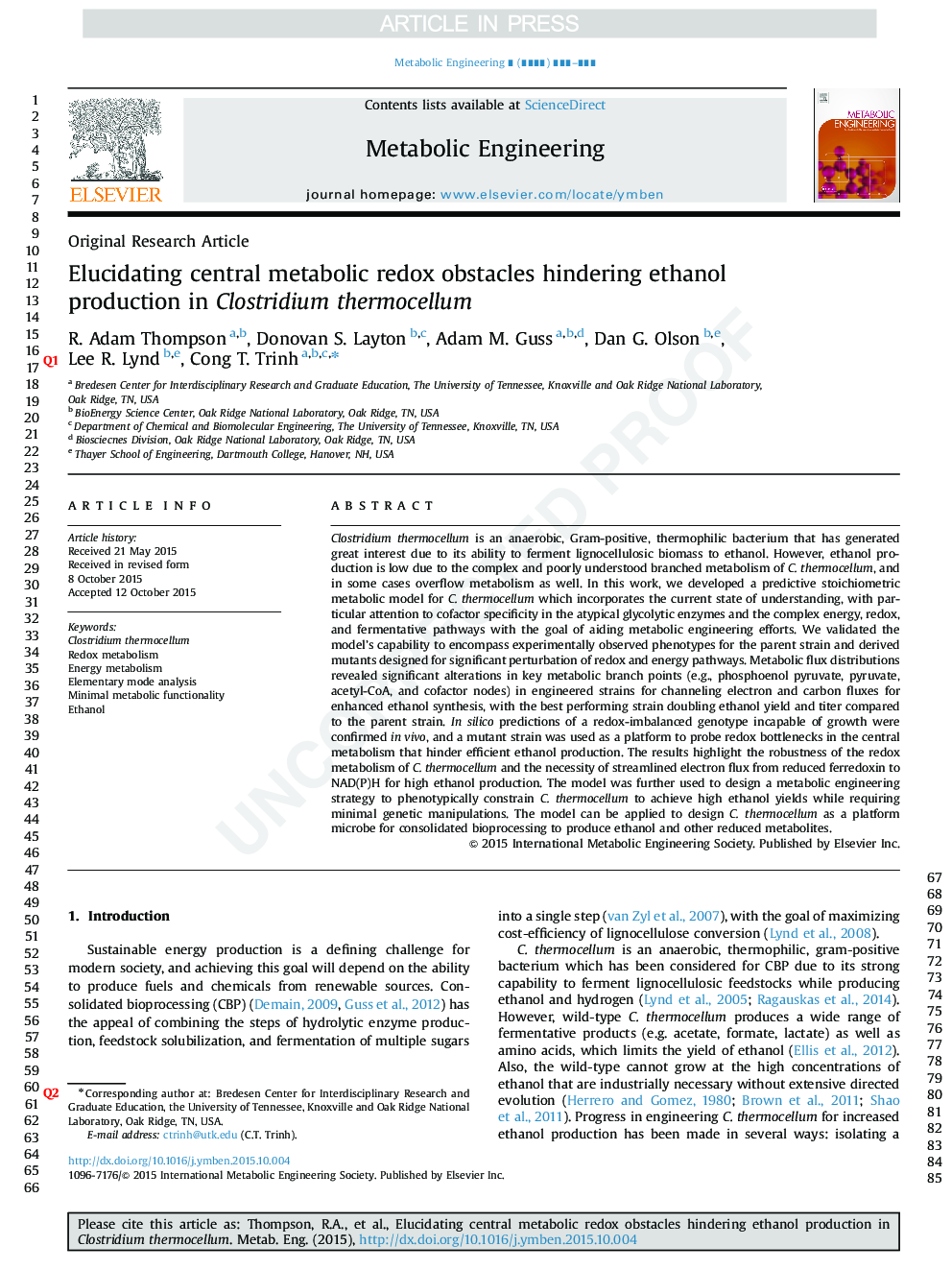| کد مقاله | کد نشریه | سال انتشار | مقاله انگلیسی | نسخه تمام متن |
|---|---|---|---|---|
| 6494322 | 44805 | 2015 | 13 صفحه PDF | دانلود رایگان |
عنوان انگلیسی مقاله ISI
Elucidating central metabolic redox obstacles hindering ethanol production in Clostridium thermocellum
دانلود مقاله + سفارش ترجمه
دانلود مقاله ISI انگلیسی
رایگان برای ایرانیان
کلمات کلیدی
موضوعات مرتبط
مهندسی و علوم پایه
مهندسی شیمی
بیو مهندسی (مهندسی زیستی)
پیش نمایش صفحه اول مقاله

چکیده انگلیسی
Clostridium thermocellum is an anaerobic, Gram-positive, thermophilic bacterium that has generated great interest due to its ability to ferment lignocellulosic biomass to ethanol. However, ethanol production is low due to the complex and poorly understood branched metabolism of C. thermocellum, and in some cases overflow metabolism as well. In this work, we developed a predictive stoichiometric metabolic model for C. thermocellum which incorporates the current state of understanding, with particular attention to cofactor specificity in the atypical glycolytic enzymes and the complex energy, redox, and fermentative pathways with the goal of aiding metabolic engineering efforts. We validated the model's capability to encompass experimentally observed phenotypes for the parent strain and derived mutants designed for significant perturbation of redox and energy pathways. Metabolic flux distributions revealed significant alterations in key metabolic branch points (e.g., phosphoenol pyruvate, pyruvate, acetyl-CoA, and cofactor nodes) in engineered strains for channeling electron and carbon fluxes for enhanced ethanol synthesis, with the best performing strain doubling ethanol yield and titer compared to the parent strain. In silico predictions of a redox-imbalanced genotype incapable of growth were confirmed in vivo, and a mutant strain was used as a platform to probe redox bottlenecks in the central metabolism that hinder efficient ethanol production. The results highlight the robustness of the redox metabolism of C. thermocellum and the necessity of streamlined electron flux from reduced ferredoxin to NAD(P)H for high ethanol production. The model was further used to design a metabolic engineering strategy to phenotypically constrain C. thermocellum to achieve high ethanol yields while requiring minimal genetic manipulations. The model can be applied to design C. thermocellum as a platform microbe for consolidated bioprocessing to produce ethanol and other reduced metabolites.
ناشر
Database: Elsevier - ScienceDirect (ساینس دایرکت)
Journal: Metabolic Engineering - Volume 32, November 2015, Pages 207-219
Journal: Metabolic Engineering - Volume 32, November 2015, Pages 207-219
نویسندگان
R. Adam Thompson, Donovan S. Layton, Adam M. Guss, Daniel G. Olson, Lee R. Lynd, Cong T. Trinh,